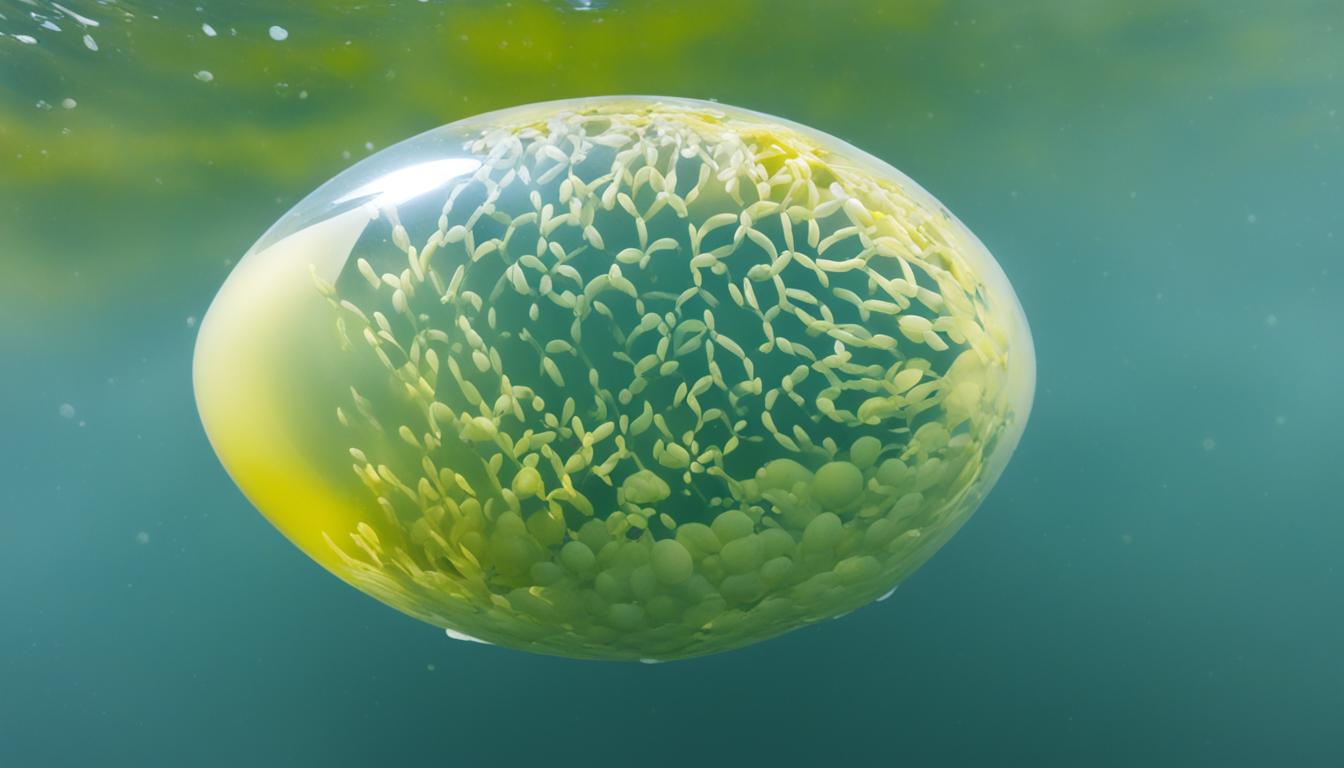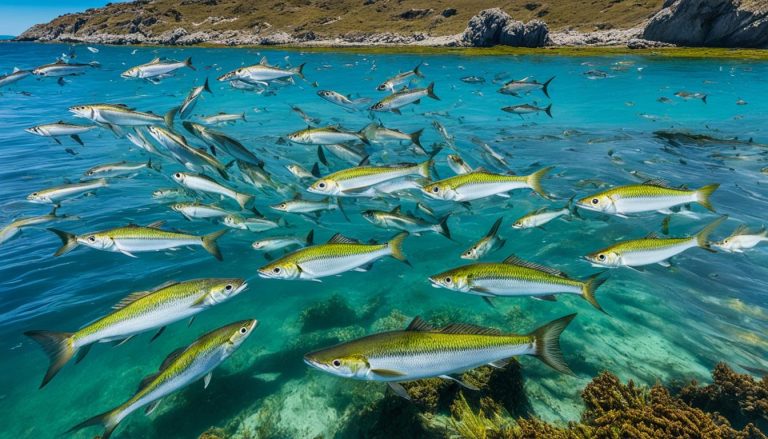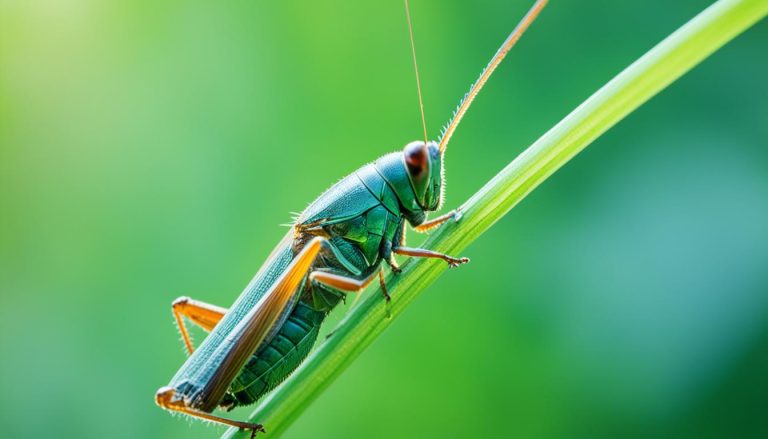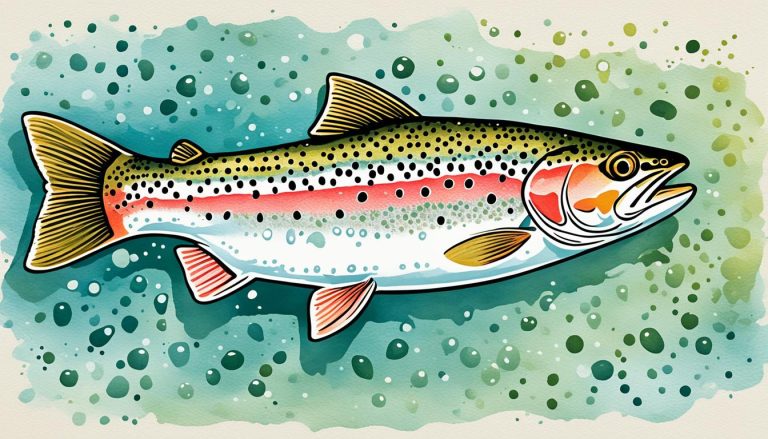Understanding the timing of carp spawn is crucial for fishermen and ecosystem management. Knowing the optimal time for carp spawning can greatly impact the success of fishermen and contribute to the conservation of fish populations.
For fishermen, knowing when carp spawn means targeting the right fishing season. By focusing on the spawning period, fishermen can increase their catch success by capitalizing on the carp’s reproductive behavior. This knowledge empowers anglers to effectively plan their fishing trips and maximize their chances of a bountiful catch.
On the other hand, understanding carp spawning patterns is also essential for ecosystem management. Carp can have a significant ecological impact, and their population needs to be carefully balanced. By controlling their reproduction, fisheries managers can mitigate potential negative effects on the ecosystem.
By comprehending the timing of carp spawn, both anglers and ecosystem managers can work towards sustainable fishing practices and the preservation of fish populations. Stay tuned to learn more about the environmental factors that influence carp spawning patterns and the implications for fishermen and ecosystem management.
Understanding Carp Spawning Patterns
When it comes to understanding carp spawning patterns, it is essential to consider the various environmental factors that influence their reproductive behavior. Temperature and water quality play a significant role in triggering carp spawning.
Carp typically prefer to spawn in water temperatures between 18-24°C (64-75°F). This range provides the ideal conditions for successful fertilization and hatching. Warmer temperatures accelerate the metabolism of the carp, increasing their activity level and reproductive drive.
Water quality is another critical factor that affects carp spawning. They prefer clean, well-oxygenated water with minimal pollutants. Poor water quality, such as high levels of sediment or pollutants, can adversely impact their reproductive success. Therefore, maintaining good water quality is crucial for preserving healthy carp populations.
Understanding these environmental factors enables us to predict and anticipate carp spawning, aiding fishermen and ecosystem managers in their respective goals. By knowing the ideal spawning conditions, fishermen can plan their fishing trips during the peak spawning season to maximize their catch success. Likewise, ecosystem managers can implement strategies to conserve carp populations and maintain a balanced ecosystem.
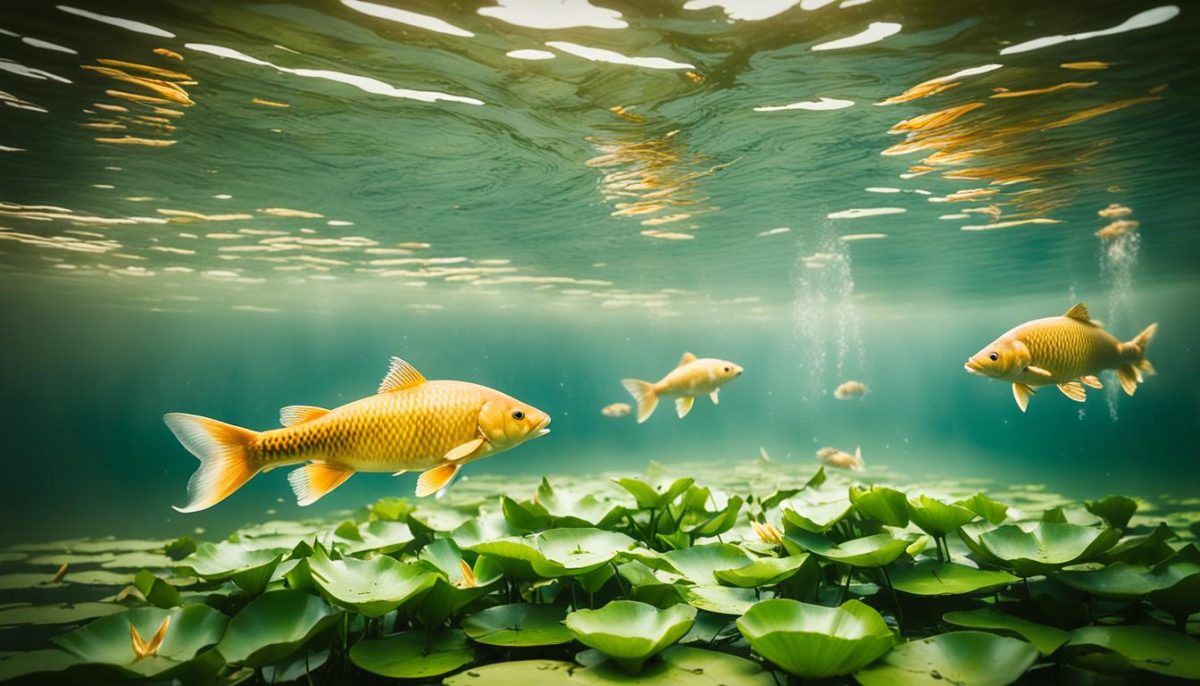
By understanding carp spawning patterns and the environmental factors that influence them, we can make informed decisions that benefit both fishermen and the ecosystem. Maintaining optimal water temperature and quality not only boosts carp reproductive success but also contributes to overall ecological health.
Factors Influencing Carp Spawning Patterns:
- Water temperature
- Water quality
- Availability of suitable spawning locations
- Photoperiod (amount of daylight)
| Water Temperature (°C) | Spawning Activity |
|---|---|
| Below 18 | Minimal to no spawning |
| 18-24 | Peak spawning activity |
| Above 24 | Decreased spawning activity |
Implications for Fishermen
Understanding the spawning season of carp has significant implications for fishermen. By knowing when carp spawn, fishermen can strategically target spawning carp, increasing their catch success and overall fishing experience. Let’s explore the benefits of this knowledge and the importance of conserving the fish population.
Targeting Spawning Carp
During the fishing season, identifying the spawning period of carp can greatly enhance a fisherman’s chances of success. Carp tend to concentrate in specific areas during their spawning season, making them easier to locate and target. By focusing on these high-density areas, fishermen can optimize their fishing efforts and increase their catch rate.
Furthermore, understanding the environmental triggers for carp spawning, such as water temperature and water quality, allows fishermen to predict the optimal time for carp to be most active. This knowledge enables fishermen to plan their fishing trips accordingly, maximizing their chances of catching a significant number of carp.
Conserving the Fish Population
Respecting the spawning season is vital for preserving the health and sustainability of the fish population. During their spawning period, carp are in a vulnerable state, and excessive disturbance can disrupt their reproductive process, impacting future fish stocks. Therefore, practicing responsible fishing by avoiding fishing in spawning areas during this critical time helps conserve and maintain the fish population.
By adhering to fishing regulations and seasons set by local authorities, fishermen play a crucial role in conserving the fish population and ensuring their sustainability for future generations. Additionally, practicing catch-and-release techniques for non-targeted fish species can help maintain a balanced ecosystem and promote the overall welfare of aquatic habitats.
| Benefits of Understanding Carp Spawning Season for Fishermen |
|---|
| Increased catch success |
| Targeted fishing in high-density areas |
| Optimized fishing trips based on environmental triggers |
| Contribution to conserving the fish population |
Knowing when carp spawn offers fishermen a competitive advantage and aligns their fishing efforts with the goal of responsible and sustainable fishing practices. By strategically targeting spawning carp and participating in fish population conservation, fishermen contribute to both the preservation of precious fish resources and the overall health of aquatic ecosystems.
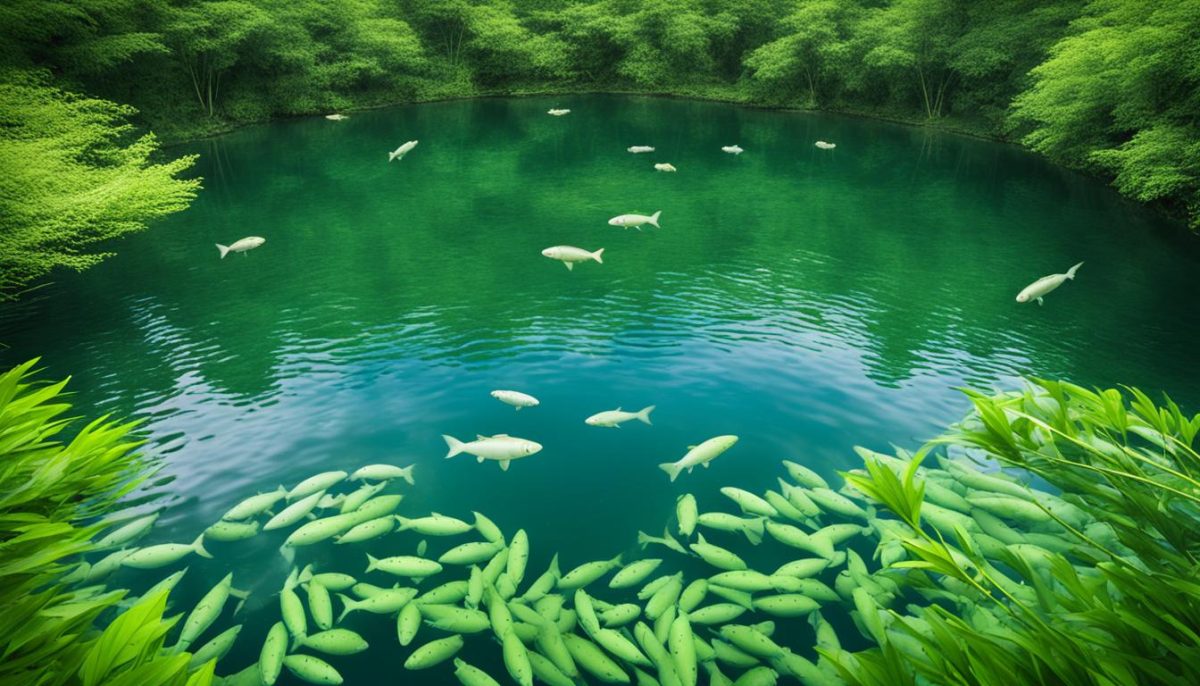
Ecosystem Management and Carp Spawn
Understanding the role of carp spawning in ecosystem management is essential for preserving the delicate balance of aquatic habitats. Carp, known for their prolific reproductive capabilities, can rapidly overpopulate a water body if their numbers are not controlled. This can have significant ecological impacts, including competition for resources with native species and habitat degradation.
The challenge lies in balancing the carp population while still maintaining a healthy ecosystem. By controlling the reproduction of carp, ecosystem managers can mitigate the potential negative effects of their rapid expansion. Implementing measures to limit their spawning, such as the removal of breeding adults or the installation of underwater barriers, can help prevent the overgrowth of carp populations.
Understanding carp spawning patterns is crucial for effective management strategies. By identifying the optimal times and locations for carp spawning, managers can focus their efforts on controlling reproduction during these critical periods. This targeted approach allows for more efficient population management, ensuring the health and sustainability of the ecosystem.
By managing carp reproduction, we can safeguard the ecological integrity of our water bodies. Ensuring a healthy balance between carp populations and other native species is crucial for maintaining biodiversity and the overall health of aquatic ecosystems. Through a combination of knowledge, research, and strategic interventions, we can make a positive impact on the ecological balance and preserve the vitality of our waterways for future generations.

